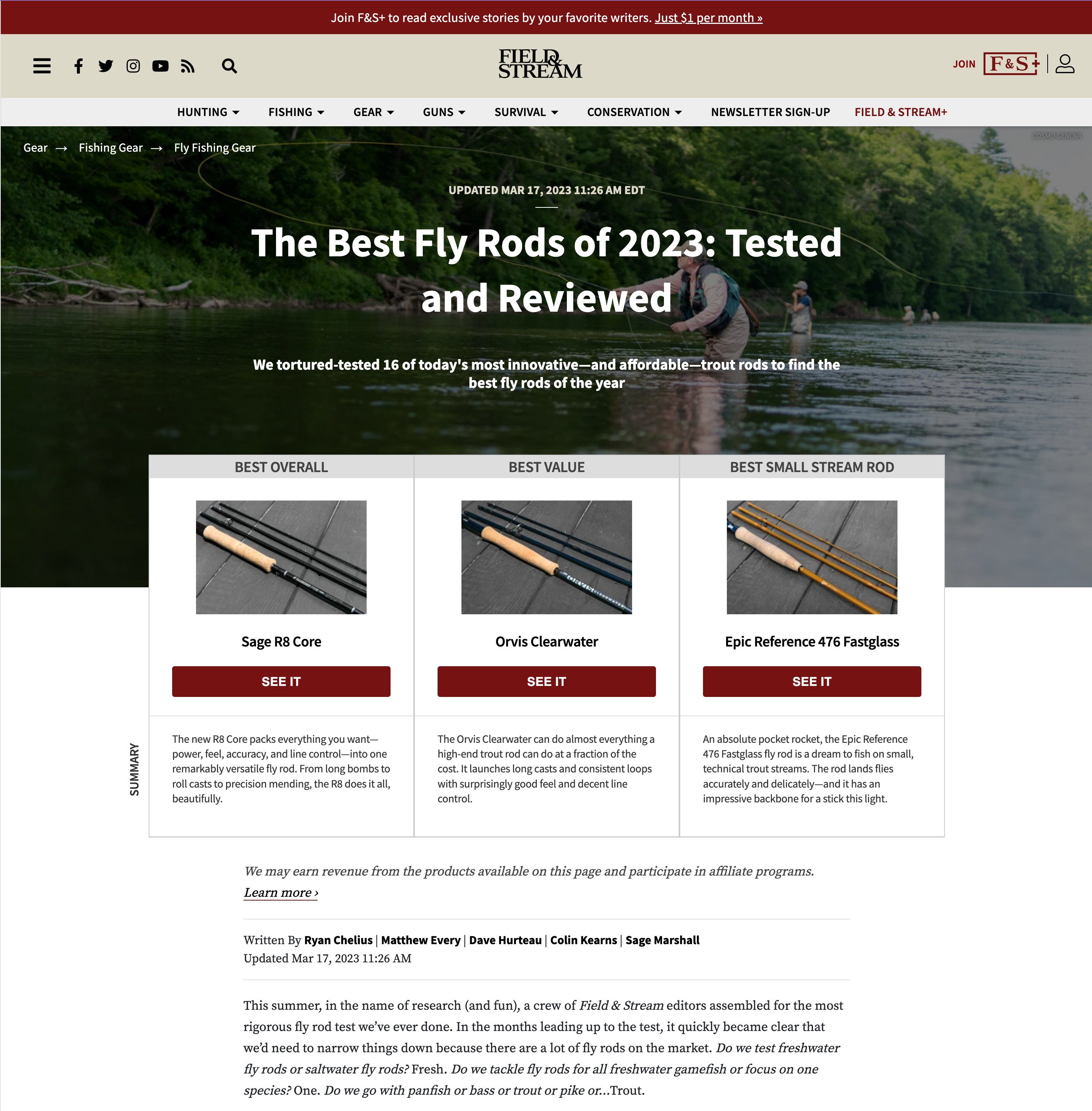
Getting an affiliate program off the ground comes down to three primary steps:
- Content Evaluation
- Apply to Affiliate Programs
- Launch Affiliate
If you’re a high-traffic website owner curious to learn about what is affiliate marketing, aka “Commerce Media” “please click through. You may also be interested in this video walkthrough of affiliate marketing software, or a step-by-step, Cliff-Notes-inspired: “Affiliate Marketing for Beginners” guide to SEO.
Step 1 | How to Set Up An Affiliate Marketing Platform —> Content Evaluation
To launch a commerce media strategy that earns affiliate revenue via authentic product partnerships, website owners first need to determine whether there is existing content that can be utilized for affiliate. Affiliate commerce media content includes: how-to guides, explainer videos, endemic product advice from subject matter experts, in-category gift ideas and suggestions, etc.
You also want to utilize your site’s analytics platforms, e.g. Google Analytics and Google Search Console, to understand two concepts:
- Current search strengths: What are the top 25 pages and keywords right now driving the largest amount of organic search results?
- Current revenue strengths: What are the top 25 highest-trafficked pages on the site? Which pages drive the most revenue, if not from traffic?
From there, utilize an SEO platform such as Google Adwords Keyword Planner, SemRush, Keyword Spy, Yoast, Moz, or others to understand search demand within your endemic category.
If hesitant, start by taking five or more in-category competitors and five or more respected publishers, and see which keywords drive traffic for them via organic search. The key intuition is that some searches drive consistent recurring traffic every month (“beats”) while others drive large amounts of traffic in a single day (“breaks”). The goal of an effective affiliate is to align your beats with the search demand for how-to guides, explainer videos, endemic product advice from subject matter experts, in-category gift ideas and suggestions, etc.
From there, assign an editorial team to cover the biggest beats that will drive traffic via affiliate earnings. Editorial alignment and inclusion in an affiliate, forward-looking strategy is the biggest and most important cultural bridge to cross.
If you are working with a partners, ask to see examples of how sites are utilizing affiliate to sell in, rather than sell out. For any content ideas, share them with your partners so that they can evaluate them and provide some thoughts on potential content to create. One thing to be cognizant of is cannibalization, so make sure your affiliate technology provider can save you time and sustainably increase revenue per click (aka “RPC”).
Popular Science helps its readers find the best STEM toys for children
Step 2 | How to Set Up An Affiliate Marketing Platform —> Apply to Affiliate Programs
For the second step, you will need to apply for a few affiliate programs. We would recommend that to start you sign up for the following:
- Amazon Associates: https://affiliate-program.amazon.com/signup
- Walmart: https://affiliates.walmart.com/
These are the most broadly applicable affiliate programs in the world. From there, you want to think about the endemic product manufacturers that might have the online sophistication for an affiliate program, e.g. Home Depot for DIY, Auto Zone for Auto, Fandango for Cinema.
Finally/eventually, you’ll want to look at the truly endemic and respected in-category, newer business models that want to earn subscription revenue, or perhaps even Robin Hood himself and (more than likely) have to execute an affiliate program that’s less technologically automated. The goal is to diversify revenue so that you are less dependent on any one publisher, especially when you can use features like product cards to increase revenue per click.
In order to get into these affiliate programs, you’ll likely need examples of where the affiliate links will be used (shout out to Step 1).
Please note that if you apply and are denied the programs it can be hard to reapply, so we’d recommend that you do the best job possible when applying to these programs (in terms of providing detailed information). You can also go through the process with some “dummy” email address/dummy data so you can see the kinds of questions the Amazons and Walmarts of the world ask when setting up affiliate.
Finally, make sure you’re mindful of your domains. If your affiliate content shows up on a subdomain, apply with that domain so that the approver can find in-category, high E-E-A-T content.

Field & Stream uses product cards to drive readers to recommended fly rods
Step 3 | How to Set Up An Affiliate Marketing Platform —> Launch Affiliate
After you’ve been accepted and have created high-traffic content, e.g. how-to guides, explainer videos, endemic product advice from subject matter experts, in-category gift ideas and suggestions, you’ll then need to drive traffic to that content in order to give the page a chance to convert into revenue. You can use A/B testing to verify the content and graphical elements that increase conversion rate, and you can use something like Syndication to increase traffic as well.
Below are the syndication platforms that publishers work with; we’d recommend starting with Apple News and Google News. These have a higher chance of driving more exposure since they’re so news-heavy.
Recommended Syndication partners:
Apple News
Google News
Smart News
News Break
Amazon OSP (US)
Amazon OSP (UK)
MSN
Flipboard
——
If you have other questions about how to set up an affiliate marketing platform for a high-traffic website, pleach reach out to us so we can help: hello@flexpress.ai.





